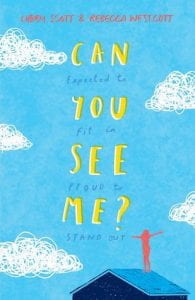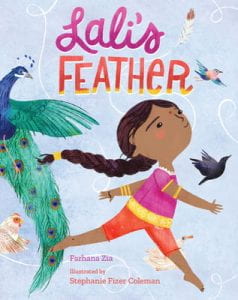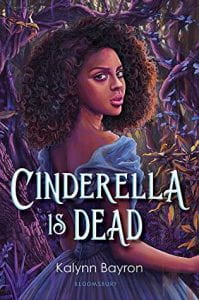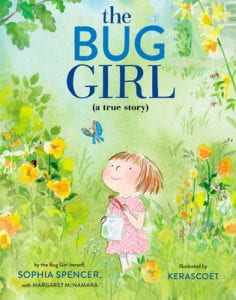 Scott, Libby, and Rebecca Westcott. Can You See Me? Scholastic.2020. 978-1-338-60891-5. 358 p. $16.99. Grades 6-8.
Scott, Libby, and Rebecca Westcott. Can You See Me? Scholastic.2020. 978-1-338-60891-5. 358 p. $16.99. Grades 6-8.
Co-authored by Rebecca Westcott and Libby Scott, an eleven-year old neuro-diverse girl, Can You See Me? uniquely captures the inner feelings of Tally Adams, an autistic British sixth grader. Through Tally’s eyes, the reader learns of the frustrations and perceptions an autistic person experiences navigating teachers, friends, and family while transitioning to the more sophisticated world of middle school. Luke, a classmate suffering from his own trauma, bullies Tally because he unwittingly views her autism as weird. Tally receives the brunt of Luke’s anger and loses her few friends when she tells the teacher Luke stole the answers to an upcoming quiz. As Tally tries to fit in at school and adjust her behavior at home, she finds comfort and courage in wearing a tiger mask and companionship in the old, three-legged dog the family is taking care of for their elderly, sick neighbor. Tally is a treasured part of a loving and supportive family, but she sometimes tries the patience of her father and older sister, Nell. Westcott and Scott do a fine job creating a window into the world of autism as well as providing tips for how to cope best with the autistic personality (both Tally’s mother and a sympathetic drama teacher are pros). After selected chapters, Tally as narrator relates excerpts from her journal which gauge her anxiety level and note the pros and cons of autism. Though the ending is somewhat abruptly idealistic–Tally’s fair-weather, catty friends proclaim that they need her and one even confesses she told the entire class Tally is autistic. Tally’s response to both, though, is authentic. She tells the girl that the information was not hers to share and she refuses to offer the girls the cookies her mother suggests she share. Overall, this book gives a particular view of autism not seen in other novels that can lead to understanding and rich discussion.
THOUGHTS: Mockingjay, A Boy and a Bat, Al Capone Does My Shirts, Rain Reign. . . no shortage of books featuring a person with autism. In Can You See Me? however, the reader can relate not only to the behaviors associated with autism, but also with the times any of us have been called out for our quirks or feeling different or not fitting in. This book is ideal for character studies, even for comparing it with R. J. Palacio’s format of Wonder: How does Tally’s sister Nell feel always sacrificing her needs for Tally? Why is it difficult for Tally’s friend, Layla, to stay loyal to Tally?, etc. The title and cover refer to the tiger mask Tally sometimes dons when she needs to face hard situations. The cover art is so busy, the background obscures the title of the book; though that may be the goal, the artwork looks amateurish and the result makes the cover forgettable.
Realistic Fiction Bernadette Cooke, School District of Philadelphia
 Zia, Farhana. Lali’s Feather. Peachtree, 2020. 978-1-682-63129-4. Unpaged. $17.99. Grades PreK-2.
Zia, Farhana. Lali’s Feather. Peachtree, 2020. 978-1-682-63129-4. Unpaged. $17.99. Grades PreK-2.


